It seems like yesterday that we moved into our new home. It has been five years now and little did I know that the next five years would be just as busy and rewarding. We have accomplished a lot in that time. In fact, more than I could have ever imagined; we built a passive house, a root cellar, started growing our own produce, built a 4 season passive solar greenhouse, added a chicken coop, and have expanded our growing space to include some perennial food systems with our food forest. This is the bulk of what we have started/completed but this list really only scratches the surface of the amount of knowledge we have accumulated in this time. To be honest, there's enough information to write a stack of books.
When we set out on this journey we had a vision. We were driven by many things including cost of living, energy insecurity and food security. We also wanted to be stewards of land and animals including livestock and wild life. We wanted to build soil and grow produce. We wanted to show others that many things that people felt were unachievable were, in fact, achievable. I feel like we have have accomplished the basis of what we set out to achieve and much more. We have made our presence known over social media for the past few years and the support and reach has been phenomenal. I have been told that the information we provide and our drive is inspiring to others. I have seen this first hand and have witnessed that people want to learn how to blend old and new, keeping old skills alive, and working with their hands to be more than just homeowners and to be stewards of the land.
The House Performance
The performance of the house has been more than acceptable. Since adding an electric vehicle our electricity usage has increased to approximately 15000 kWh per year. Keep in mind that this includes
an electric car (15000 km/yr), the house, our garage, greenhouse systems (running the GAHT system in the greenhouse, auxiliary heaters, heating matts, daylight extension lighting etc for greenhouse production),and lighting and ventilation in the chicken coop. I will also note that about 800 kWh goes towards post harvest processing of garlic as we are now garlic farmers on borrowed land! In the winter we still burn about 3/4 cord of locally sourced firewood in the walltherm gasification wood stove per year.
There have been a few issues along the way but for the most part I am pleased. One issue has been with the ERV. In a five year period the exhaust ECM motor has been replaced twice. Luckily it is at the expense of the manufacturer as the fan assembly is over $700 CAD to replace. I hope it is not a sign of things to come.
The humidity issues seen after we moved in have mostly evened out. We get some condensation on windows in the winter on the north side of the house during the night time but it mostly disappears during the day time. I could ventilate further but it hasn't caused any real issues and the humidity during winter is much more comfortable hovering around 45%.
It can be a little stuffy upstairs during summer. Last summer we played around with running the minisplit for cooling and setting the ERV on recirculate. It made a world of difference. The temps were warm but the humidity was much lower. This made the higher temperature upstairs more tolerable. Luckily our summers are short enough that night time flushing has been mostly effective to deal with the issue.
Electricity rates in the province are almost at a point where going net zero may now be financially feasible using a PV grid tie system. We are currently looking at installation of a PV system to offset most of our power. As the grid in NL is mostly hydroelectricity, installation of a PV system doesn't really provide benefit from a carbon offset point of view. However, as I move towards retirement, I am thinking it may be a decent investment to offset some costs which will continue to inflate. Even if the PV system production decreases yearly, I still think the benefit is there but I really have to run the numbers.
The Root Cellar
What can I say? It is a passive structure and it works. Cellaring vegetables is a lost art with lots of science involved. We are actively learning year after year and have come up with some good storage methods. The root cellar (and our garden) has changed the way we think about our food. A cellar is more about keeping vegetables alive then keeping them cool or from freezing. The darkness and cold induces dormancy and maintains life over the long stretch of winter.
The cellar has changed the way we eat. We mostly eat things that are in season or things that we have stored. Potatoes are a staple which works out well for us as we enjoy them! They are very versatile, can be used in many ways, and store for 8+ months. Needless to say, during winter we transition to eating from the cellar. The abundance and selection of fresh root vegetables is the best. We grow things now that can't even be purchased in a store. This is a whole other side to food security that we hadn't considered; having unique veg that is simply not available. Winter stews and creamed soups are quite satisfying during the winter season and real comfort food. The cellar is our vegetable isle in the grocery store. Once or twice per week I head down to the subterennean dwelling to stock up on and pick over produced stored months before.
Root cellaring is a bit of an art to master and one needs to inspect things regularly for spoilage in order to prevent further spoilage later. We have learned to sort vegetables before storage so that we eat things that look like it may not store long. This method of being proactive has worked well and most storage crops last well into June. By that time the garden is already in production so were not as dependent on the vegetables stored in the cellar.
The Greenhouse
My initial thoughts were that the greenhouse would provide "green" food during the winter and we would switch to other crops (tomatoes, peppers, cucumbers, etc) during summer. Although it's a four season greenhouse, it rarely sees winter temperatures. During the winter the temperature inside the greenhouse rarely goes below 5 C owing to good insulation, twinwall glazings, good air sealing and the installed GAHT (ground to air heat transfer system) which I designed and installed myself during the construction phase. The GAHT performance has been really good. Two centrifugal fans operate at less than 200W blowing cold air underground which comes back into the greenhouse at an air temperature equal to the ground temperature under the greenhouse. We have seen nights where ouside temperatures have held at -17 C but the GAHT is able to maintain temps in the greenhouse above 4.7 C. That is a differential of 21.7 C with respect to the outside running less than 200 W. Heat loss calculations have put the required load at about 800 W - 900 W so I am quite pleased with the performance.
We determined quite quickly that the limiting factor for winter growing in this greenhouse wasn't the interior temperature; it was light. Once below 10 hours of daylight, plants enter a dormant state. They're alive but not really any active growth is happening. In the first year we used the greenhouse as a living walk in refrigerator. It kept plants alive and they could be picked throughout winter until daylight started expanding in February. In the second year we added lighting to extend daylight using an astronomical timer. The lights come on 1 hour before sunset and go off at 8 pm. This gives about 12 hours of daylight at the winter solstice. The production value of adding lighting was phenomenal. It adds about $25-$30 on our electricity bill per month (increasing from oct 31 to the solstice but then decreasing until they're turned off in march) but the food value is well worth it as we can force active growth with that kind of day length extension. We eat from the greenhouse just about every day. It has allowed us to have leafy and Asian greens all winter and some herbs that would only be accessible during summer. We also grow radishes, turnips, micro greens and some other cold season crops.
The greenhouse is heavily insulated by greenhouse standards and has allowed us to get a head start on summer. We plant tomatoes in April and are picking tomatoes by mid June which is almost two months ahead of other local producers. We experimented one year and did two successful crops of tomatoes in one year! We produced almost 150 lbs of tomatoes that year but it was very intensive. Instead now we aim for diversity and getting crops in and out as quickly as possible. Then comes the preservation work like bottling, pickling, fermenting, and the like. Learning these skills have enabled us to extend our summer eating season into winter with canned sauces, salsas, pickles, and ferments just to mention a few things.
The greenhouse is also a nursery for many of our summer crops. This has allowed us to start things like peas and fava as early as may (a full month before direct seed time) and squashes as early as April for transplanting in the garden by June. Squash now makes up a good portion of our staple crops. There are so many varieties and storage is simple as it doesn't require a root cellar. Instead we store these in the porch between the garage and house. The temperature in that space during winter doesn't go below 5 C which seems to work well for squash and they store well into march from a September harvest.
Our greenhouse opens up possibilities that would otherwise be impossible in our climate. We successfully grow Olympian figs in our greenhouse. They are a fun treat to grow and provide some figs mid-summer and more through the fall and into December. Figs are a treat that we once bought from the store when they were available (rarely). Now we get to treat ourselves yearly.
The Garden
The garden has expanded by leaps and bounds. We initially planted 5 crops in year 1. We are now growing over 45 different crops yearly and have experimented with grains such as oats and sorghum from which we grind our own flour and produce our own cereal. Onsite grain production has been a real eye opener. It is amazingly intensive with many steps to the final product. Luckily we grow a hulless variety of oats which makes processing easier.
Our main focus over the past few years has been pushing the seasonal boundaries for growing outside. We have done this using protective row covers for many crops. We are able to grow outside now for almost 6 months of the year now. Getting up and running in the spring using protective coverings has been a game changer for access to fresh food early in the season. We can get multiple seasons of growing from some vegetables using this simple technology.
Annual production is intensive on soils and requires fertility. We now compost (hot composting method) and being close to the ocean is really beneficial for access to fish offal which we use to make our own home brew fish hydrolysate. This created using a fermentation method which acidifies and breaks down the waste product into a usable soil amendment so we don't have to depend on imported fertilizers. Likewise, composting allows us to recycle kitchen scraps, garden waste and vegetable waste from the annual production space and greenhouse. Our chickens provide manure and they also provide a compostable bedding that can be turned into an excellent soil amendment. We've tried to practice waste diversion as much as possible and create a circular economy inside the garden. Vegetable waste is first fed to the chickens. Their manure is composted and added back to the garden. The chickens also provide us eggs and the extra we sell to the neighbours.
Chickens and the cycle of life
Raising animals is not what I expected but it has been a lesson in animal behaviour and life cycles. Our rooster, which was socialized from an early age, turned on me one day. It is the first time I have ever been attacked by an animal. His intentions were clear: he didn't want me in the picture anymore. I had to pin him down until he submitted! Some people may have righted his wrong by culling. I felt that he was just a rooster doing what roosters do. He simply needed a correction from the larger rooster: me. Everything has been fine since that incident, but I now carry a stick, or a shovel, or a bucket, so I can keep some space between me and him. He seems to be intimidated by objects he hasn't seen before so I use this to my advantage to avoid confrontation. It is likely this is simply a survival mechanism: don't screw with the thing that looks different.
Sometimes animals get sick. Becoming the onsite veterinarian is on the list of skills when you own livestock. I have found it to be both challenging, gratifying, and mortifying. Everything is mostly easy when all is well...but not so much when animals get sick. Sometimes choices have to be made and your hands are a tool to put an end to suffering. This has been the first time in my life that I have had to use my hands in this way. Each time has been as hard as the first time. Despite being confronted by such scenarios, I feel like the positive experience of owning animals far outweighs the necessity to end suffering.
I have yet to raise animals for food and I'm not sure I have it in me to do so. You see, like most people, I was disconnected from the food system. Food was stuff on shelves or in refrigerators at the market. The disconnect makes it easy to decide to eat meat. Since owning animals our meat consumption has decreased significantly despite me seeing how we can take the suns energy and turn it into something that has low food value and then use those things to turn something else (lets say a chicken) into something alive that has high food value. We've created something that is energy dense and it can be harvested when needed. We have adopted a "waste no meat" policy in our household, and something as simple as a chicken can last many meals if treated properly. Butchering into parts and using bones for broth or soup/stew and/or canning ensures we get the most from the animal. I have even toyed around with the idea of further processing the bones for use as "bone meal" in order to recycle the product back into the garden. That's a future project.
I do see that there's something intrinsically appealing about raising your own livestock for food if you have space. You get to make choices about animal welfare. You get to choose how it is raised...but then there's the "one bad day". I have not yet made the leap to culling for food despite seeing how raising meat sources on site would be beneficial to us. Instead we have switched to purchasing meat from local farmers that raise animals ethically and through which we have built relationships. I feel much more connected to the source now which makes me feel better I think.
Experiencing impermanence first hand through constant cycling year after year has become an unexpected but enlightening benefit to raising food.
The Food Forest
The food forest will bring a huge amount of diversity to our property. This will attract wildlife and pollinators and will provide perennial food as we age. It has been alot of work to get going but will be less intensive than annual vegetable production in the long run. Once established, the forest will be a few thousand square feet. It will provide food for many years ranging from perennial roots, herbs, mushrooms (mainly wine caps), berry trees (saskatoon, currant, haskap, sea buckthorn), some fruit trees (cherries, plums, pears, apples) and nut trees (chestnut and hazel) as well as a diverse understory of pollinator attractors and chop and drop mulches. Perennial foods like asparagus, hostas, solomons seal, sorrels, and other greens are available early in spring while other foods like bramble berries are late in the summer. The food forest will provide an ever changing landscape of food that will evolve through the season and yields will change through the years.
Summary
I feel like our lives have changed for the better over the past 5 years. Experimenting, accumulating knowledge, and applying what we have learn in order to become more productive so we may continue our journey towards partial self-sufficiency. I say "partial" because I don't think we could never be truly self sufficient; but it feels good to try and succeed. This project has been a lot of work and it has been exponentially rewarding. We have inspired others to do the same which is very humbling. If we inspire a few people along the way as well as benefit ourselves then it was well worth the journey. Are we making a difference to the earth? Who knows but what ever were doing it can be bad right? I have so many photos from the past 4-5 years that it was hard to choose what to show so here's a selection of property photos as well the life of abundance that we have created here at The Homestead at Flatrock here in Flatrock Newfoundland, Canada.









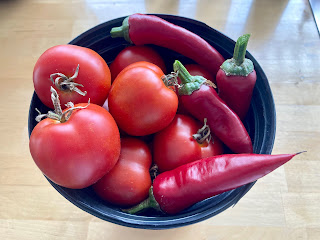






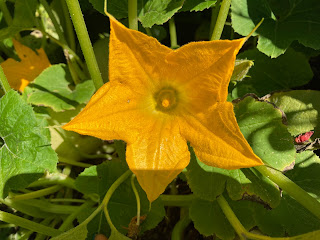











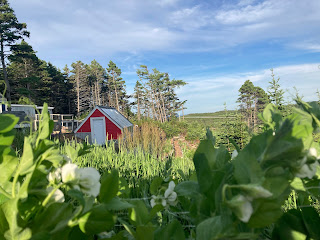

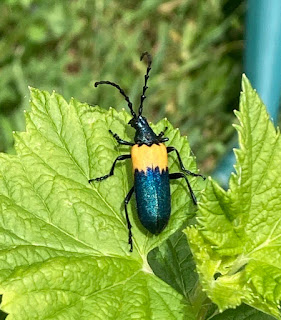
















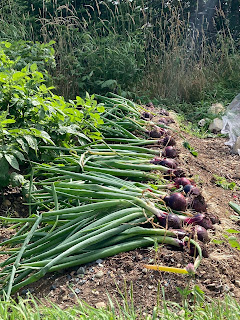



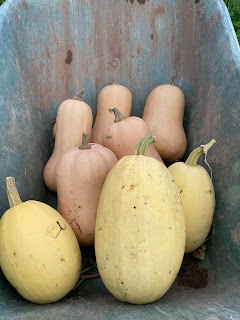







Comments
Post a Comment